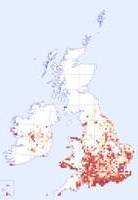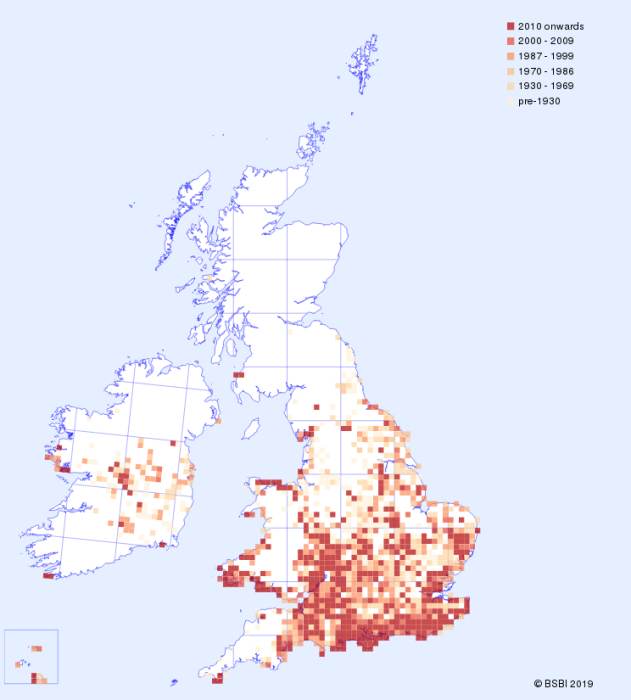The Green-winged Orchid is an early-flowering orchid, first appearing in late April or early May and continuing to flower into the first half of June. This orchid is scarce and localised and, due to habitat loss and destruction, is now in steep decline throughout the UK. Its association with ancient, species-rich grasslands is its main downfall since, in the UK, we have now lost well over ninety percent of our old wildflower meadows. Green-winged Orchids can be found in a range of habitats from dry limestone grassland to damp pastures. In some areas this orchid grows on railway embankments, in churchyards and also in sand dunes. It prefers open sunny positions. Although superficially similar to the Early-purple Orchid, the Green-winged Orchid has unspotted leaves and always has parallel green 'stripes' on its sepals which, together with two petals form a 'hood' at the top of the flower. The flowers vary in colour including pink-purple, pale rose pink and even white.
| Distribution Map | Key Features | |
 |
Records for the Green-winged Orchid from BSBI are shown on the map with most recent in front. (Hover the mouse over the small map to expand it.) |
Plant: 7-30cm, occasionally to 50cm, stem flushed pink-to-purple towards the top. |
Image Gallery for Green-winged Orchid Anacamptis morio
| Pollination | Taxonomy & Hybrids |
The Green-winged Orchid is pollinated mainly by bees. It is a deceit orchid that attracts insect visitors without offering a reward, as it does not produce nectar. The most widely accepted view is that the main pollinators are various species of bees, and the flowers are especially attractive to naive queens early in their flight period. |
The Green-winged Orchid belonged, until recently, to the genus Orchis, but recent genetic studies have revealed that it (and the Loose-flowered Orchid Anacamptis laxiflora with which it sometimes hybridises) is more closely related to the Pyramidal Orchid Anacamptis pyramidalis, and so it has now joined the genus Anacamptis. |
Articles about Green-winged Orchid in JHOS
